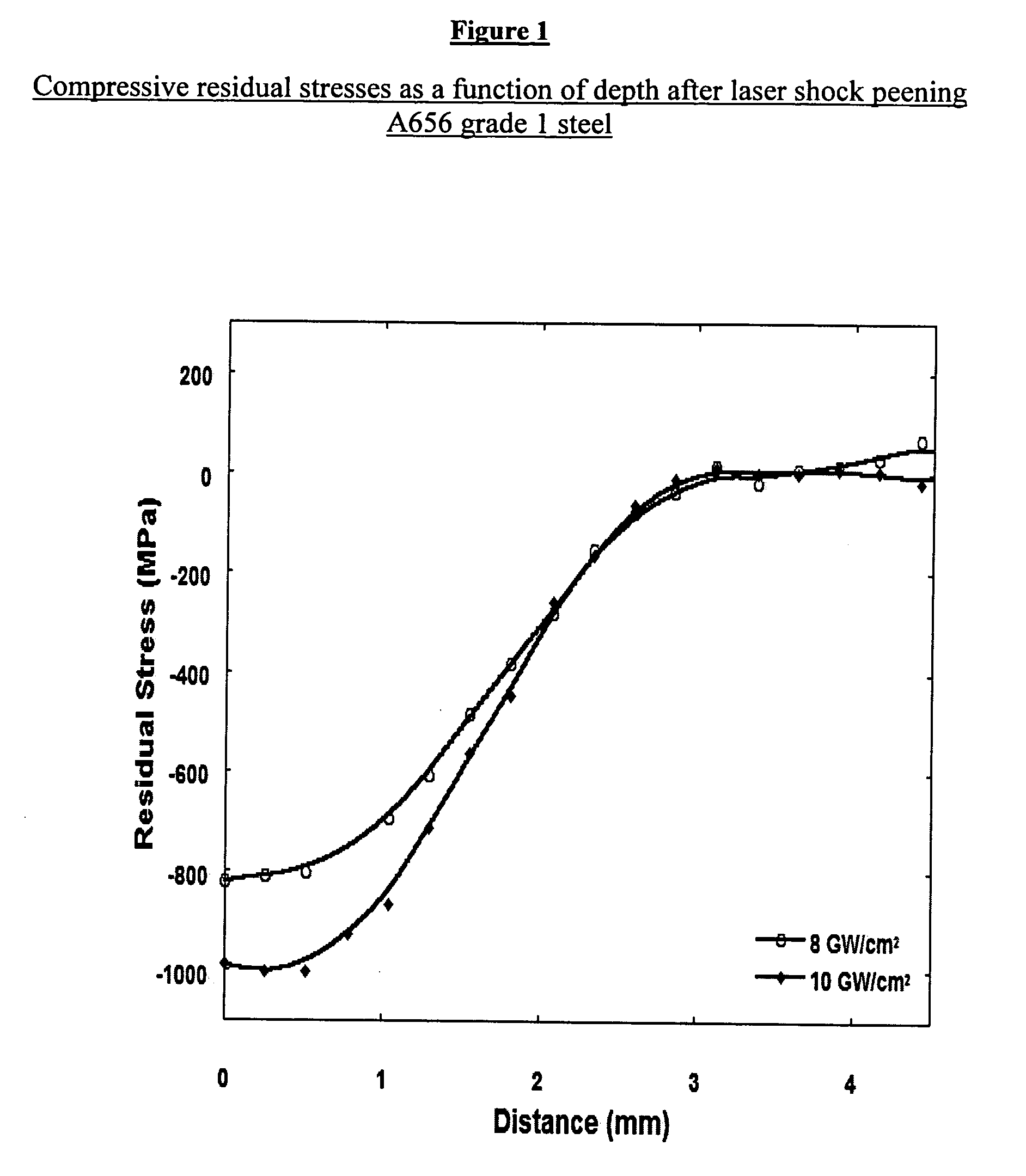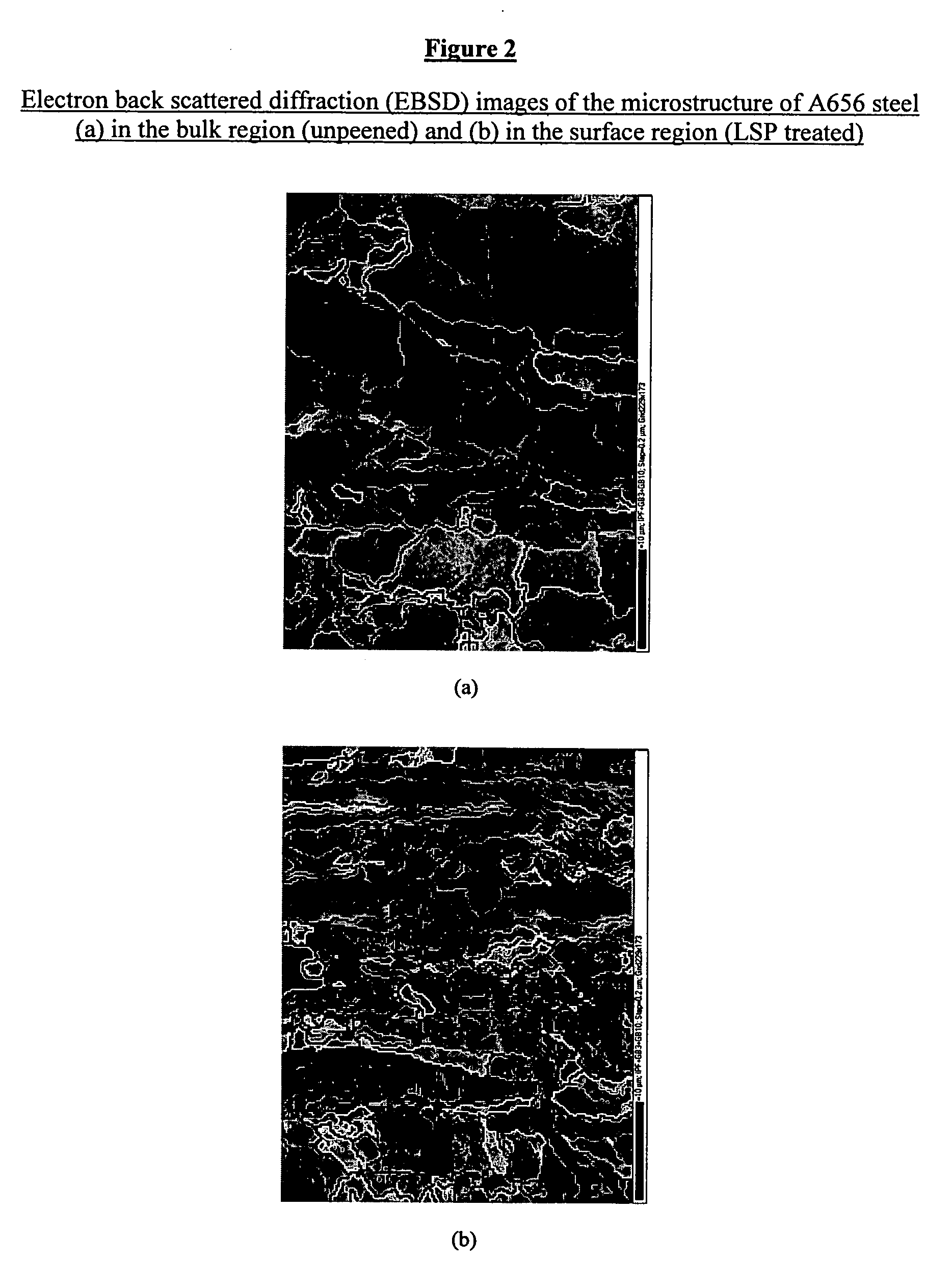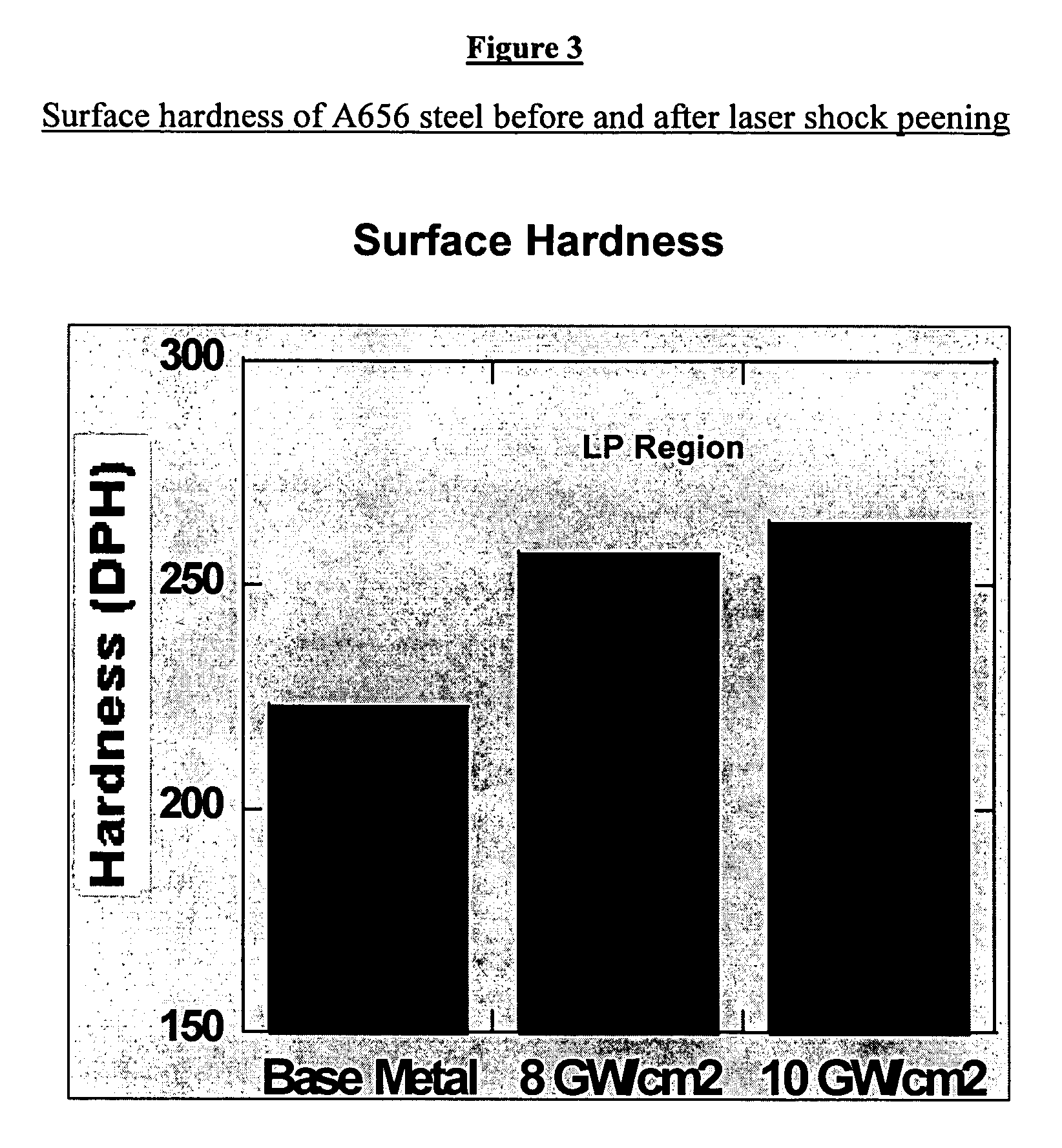Use of friction stir and laser shock processing in oil & gas and petrochemical applications
a technology of friction stir and laser shock processing, which is applied in the direction of furnaces, heat treatment equipment, manufacturing tools, etc., can solve the problems of reducing the mechanical integrity of the joints, affecting the performance of the fusion welding, so as to improve the stress corrosion cracking resistance and environmental cracking resistance, improve the fatigue life, and improve the effect of fatigue li
- Summary
- Abstract
- Description
- Claims
- Application Information
AI Technical Summary
Benefits of technology
Problems solved by technology
Method used
Image
Examples
example 1
LSP Treatment of Steel
[0097]ASTM A656 grade 1 steel was treated with LSP to determine the residual compressive stresses generated below the surface. FIG. 1 is a plot of the compressive residual stresses induced by LSP treatment as a function of depth from the surface for A656 grade 1 steel for laser power densities of 8 and 10 GW / cm2. Residual stresses were measured using the 3D-Energy Dispersive X-ray Diffraction (3D-EDXRD) method. The residual compressive stresses increase as a function of the laser power density utilized.
[0098]The A656 grain structure was subsequently measured using electron back scattered diffraction (EBSD). FIG. 2 shows the electron back scattered diffraction (EBSD) images of the microstructure of bulk A656 steel (a) in the bulk region (nonpeened) and (b) the surface region (after laser shock peening). From an examination of the microstructure of bulk A656 in figure (a), the average grain thickness was 3.4 micrometers. In contrast, the microstructure of the las...
PUM
| Property | Measurement | Unit |
|---|---|---|
| depths | aaaaa | aaaaa |
| depths | aaaaa | aaaaa |
| wavelength | aaaaa | aaaaa |
Abstract
Description
Claims
Application Information
 Login to View More
Login to View More - R&D
- Intellectual Property
- Life Sciences
- Materials
- Tech Scout
- Unparalleled Data Quality
- Higher Quality Content
- 60% Fewer Hallucinations
Browse by: Latest US Patents, China's latest patents, Technical Efficacy Thesaurus, Application Domain, Technology Topic, Popular Technical Reports.
© 2025 PatSnap. All rights reserved.Legal|Privacy policy|Modern Slavery Act Transparency Statement|Sitemap|About US| Contact US: help@patsnap.com



